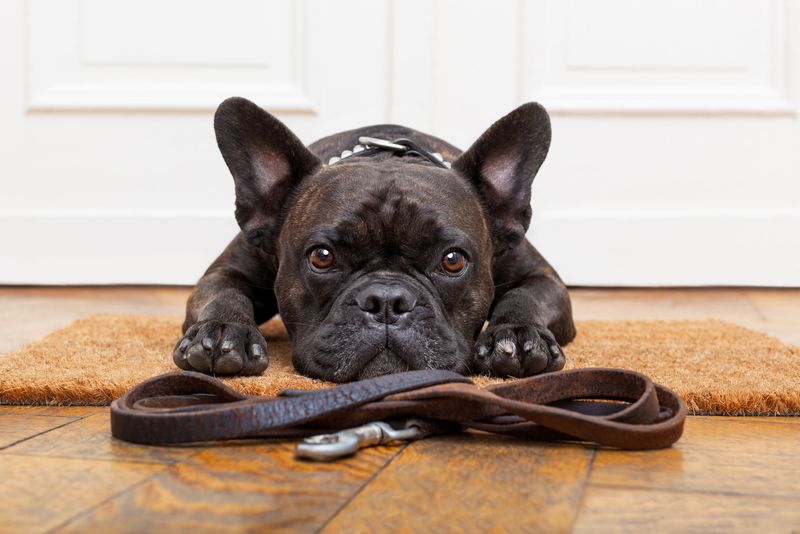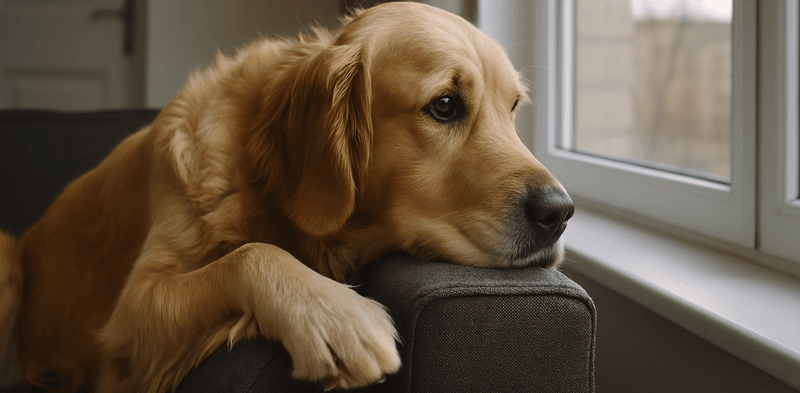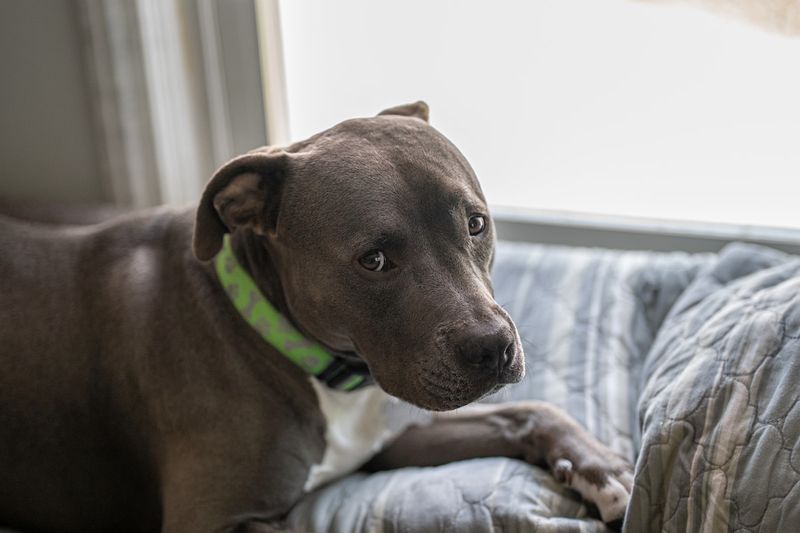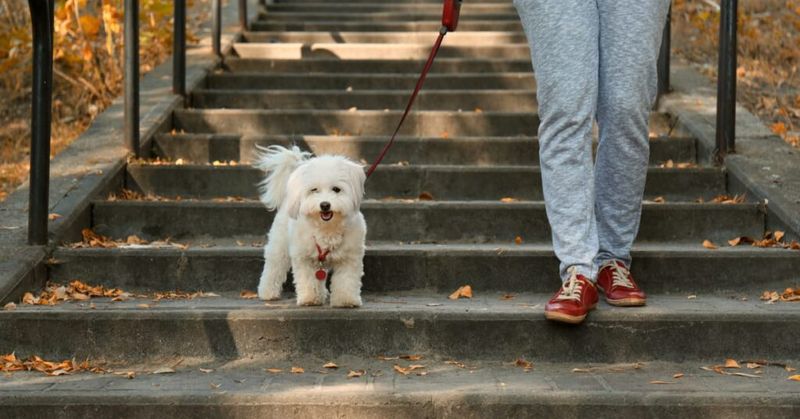13 Surprising Ways You’re Making Your Dog Miserable Without Realizing It
Dogs bring boundless joy to our lives with their loyalty, affection, and playful spirits. They’re more than pets—they’re family. But as devoted as we may be, even the most well-meaning dog owners can unknowingly do things that negatively impact their pet’s emotional well-being. Our busy lives, unintentional habits, or simple lack of awareness can create environments that leave our dogs feeling stressed, anxious, or even depressed.
Canine depression is a real and growing concern, and while dogs can’t speak up, they do show signs—withdrawal, disinterest in play, changes in appetite, or uncharacteristic behaviors. Often, these signals are misunderstood or missed entirely. The truth is, many of the things that make dogs unhappy are surprisingly common and easy to fix—once we know what to look for.
Whether it’s neglecting daily routines, not offering enough mental stimulation, or misreading their emotional cues, small oversights can add up. But the good news? With a bit of awareness and a few simple changes, you can greatly enhance your dog’s quality of life.
In this guide, we’ll uncover 13 everyday behaviors that may be unintentionally depressing your dog. From overlooked needs to habits we’ve picked up over time, these insights will help you reconnect with your pup in a deeper, more compassionate way—ensuring their tail keeps wagging for all the right reasons.
1. Boring Days Without Mental Challenges
Your smart pup needs brain exercise just as much as physical activity. Dogs left with nothing to figure out or solve often become destructive, anxious, and depressed. Try puzzle toys, snuffle mats, or simple training games to keep their minds active.
Even five minutes of teaching a new trick provides valuable mental stimulation. Rotate toys regularly so everything feels fresh and exciting.
Remember that working breeds like Border Collies and German Shepherds especially need these mental challenges to prevent frustration and behavior problems.
2. Unpredictable Daily Schedules
Dogs thrive on knowing what comes next in their day. When mealtimes, walks, and play sessions happen at random times, it creates genuine anxiety for your four-legged friend.
Their bodies are designed to anticipate routines – they actually produce digestive enzymes before regular mealtimes! When you constantly change schedules, they can’t prepare physically or mentally.
Even on weekends, try keeping key activities like morning walks and dinner within 30 minutes of weekday times. Your dog will feel more secure and balanced with this predictability.
3. Too Much Solo Time
Dogs are pack animals who evolved to be with their family group most of the time. Long hours alone can trigger separation anxiety, depression, and destructive behaviors.
Many owners don’t realize their dog spends 40+ hours weekly in solitude. This isolation takes a serious toll on their emotional wellbeing. If long workdays are unavoidable, consider dog walkers, doggy daycare, or asking a neighbor to visit midday.
Even having a radio playing while you’re gone can help reduce the feeling of complete abandonment that makes many dogs miserable.
4. Skimping on Exercise Needs
Different breeds have dramatically different exercise requirements. A 20-minute walk might exhaust a Bulldog but barely touch the energy of a young Husky or Cattle Dog.
When high-energy dogs don’t get proper exercise, they often develop destructive habits, excessive barking, or anxiety. Their bodies are built for movement and activity.
Research your specific breed’s needs and make a realistic plan. If you’re short on time, consider activities that maximize energy output like fetch, swimming, or using a flirt pole to give your dog the physical outlet they desperately need.
5. Limited Exposure to Other Dogs
Proper socialization teaches dogs vital communication skills and confidence. Dogs who rarely meet others often become fearful or aggressive during encounters. Many owners mistakenly think dog parks are the only socialization option.
Controlled playdates or structured training classes provide better quality interactions. Start with calm, well-behaved dogs in neutral territories. Watch for positive body language like play bows and relaxed movements.
Remember that socialization isn’t just about other dogs – it includes positive experiences with different people, environments, and situations throughout your dog’s life.
6. Using Punishment-Based Training
Yelling, physical corrections, or harsh training tools damage your dog’s trust and create fear rather than understanding. Your dog doesn’t connect punishment with their action – they connect it with you being scary.
Studies show positive reinforcement creates more reliable behaviors and stronger human-animal bonds. Reward-based methods help dogs think and make good choices.
Instead of punishing mistakes, set your dog up for success and reward what you want. If your dog jumps on guests, teach and reward an alternative behavior like sitting for greetings rather than scolding the jumping.
7. Dismissing Health Concerns
Dogs instinctively hide pain and discomfort, making it easy to miss subtle signs of health problems. Changes in behavior like decreased activity, increased irritability, or new habits often indicate physical issues.
Many owners mistakenly attribute these changes to stubbornness or aging. In reality, your dog might be suffering silently from joint pain, dental problems, or internal discomfort.
Pay attention to small changes – reluctance to climb stairs, less enthusiasm for walks, or new sleeping positions. These could signal pain requiring veterinary care. Regular check-ups catch issues before they become serious problems your dog silently endures.
8. Overwhelming Environments
Constantly noisy households, frequent visitors, or chaotic environments can overwhelm your dog’s sensitive senses. Dogs have hearing far more acute than humans and can become stressed by stimulation levels we barely notice.
Watch for stress signals like excessive panting, pacing, hiding, or licking lips. These indicate your dog needs a break from overwhelming situations. Create a quiet retreat space where your dog can escape when things get too intense.
A covered crate or quiet room gives them control over their exposure to stimulation. Some dogs need this sanctuary during parties, when children are playing loudly, or during thunderstorms.
9. Rushing Walks Without Sniffing Time
Quick potty walks without exploration time deprive dogs of their primary way of understanding the world. A dog’s sense of smell is their most developed sense – they experience life nose-first!
Sniffing provides crucial mental stimulation and helps dogs feel connected to their environment. It’s like reading the neighborhood newspaper. Try scheduling two types of walks: quick relief breaks and longer “sniffari” adventures where your dog sets the pace and direction.
Even busy owners can designate one walk daily as sniff time. This simple change significantly improves many dogs’ quality of life and reduces frustration behaviors.
10. Multiple Homes and Changing Environments
Dogs thrive on stability and routine. Frequent moves, changing caregivers, or regular boarding creates significant stress and anxiety for most dogs. Many owners underestimate how disruptive environmental changes are to a dog’s sense of security.
Your home is their entire world – changing it repeatedly can cause lasting insecurity. If changes are unavoidable, bring familiar items like beds and toys to new locations. Maintain consistent rules and routines regardless of location.
For necessary boarding, choose facilities that maintain similar schedules to your home and consider sending items with your scent to provide comfort during separations.
11. Not Acknowledging Their Losses
Dogs grieve deeply for lost animal companions and human family members. The sudden disappearance of a housemate leaves them confused and searching for their missing friend.
Owners sometimes get a new pet immediately or remove all items belonging to the deceased companion. This doesn’t give your dog time to process the absence. Allow your grieving dog extra attention, maintain routines for stability, and be patient with behavior changes.
Some dogs benefit from keeping a toy or bed from their lost companion for a transition period. Recognize that your dog needs time to adjust to the new family dynamic, just as humans do.
12. Attention Only When Convenient
Many dogs spend their days being ignored until their owners have free time. This creates a feast-or-famine attention pattern that’s confusing and frustrating.
Dogs pushed away repeatedly when seeking connection often develop problematic attention-seeking behaviors like barking, pawing, or destructiveness. They’re simply trying to fulfill their social needs.
Even busy days can include brief quality interactions. Try 30-second petting sessions throughout your day, making eye contact when giving commands, or including your dog in appropriate activities like watching TV together.
These small moments of connection make a huge difference in your dog’s emotional wellbeing.
13. Replacing Interaction with Gadgets
Automatic feeders, treat-dispensing cameras, and electronic toys can supplement care but shouldn’t replace human connection. Technology can’t fulfill your dog’s deep need for social interaction with their human family.
Many owners mistakenly believe these devices adequately replace their presence during long absences. While helpful tools, they don’t provide the emotional satisfaction of direct interaction.
Use technology as a supplement, not a replacement. The automatic ball launcher is fun, but playing fetch together creates a bonding experience no machine can match. Remember that your dog’s relationship with you is their primary source of security and happiness.



















